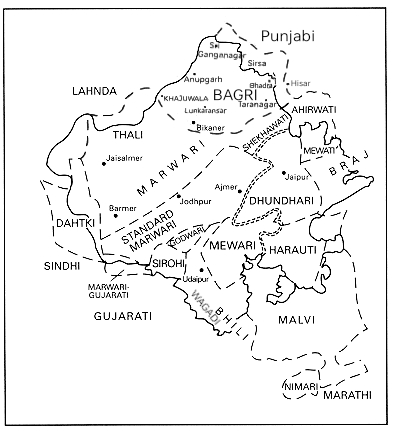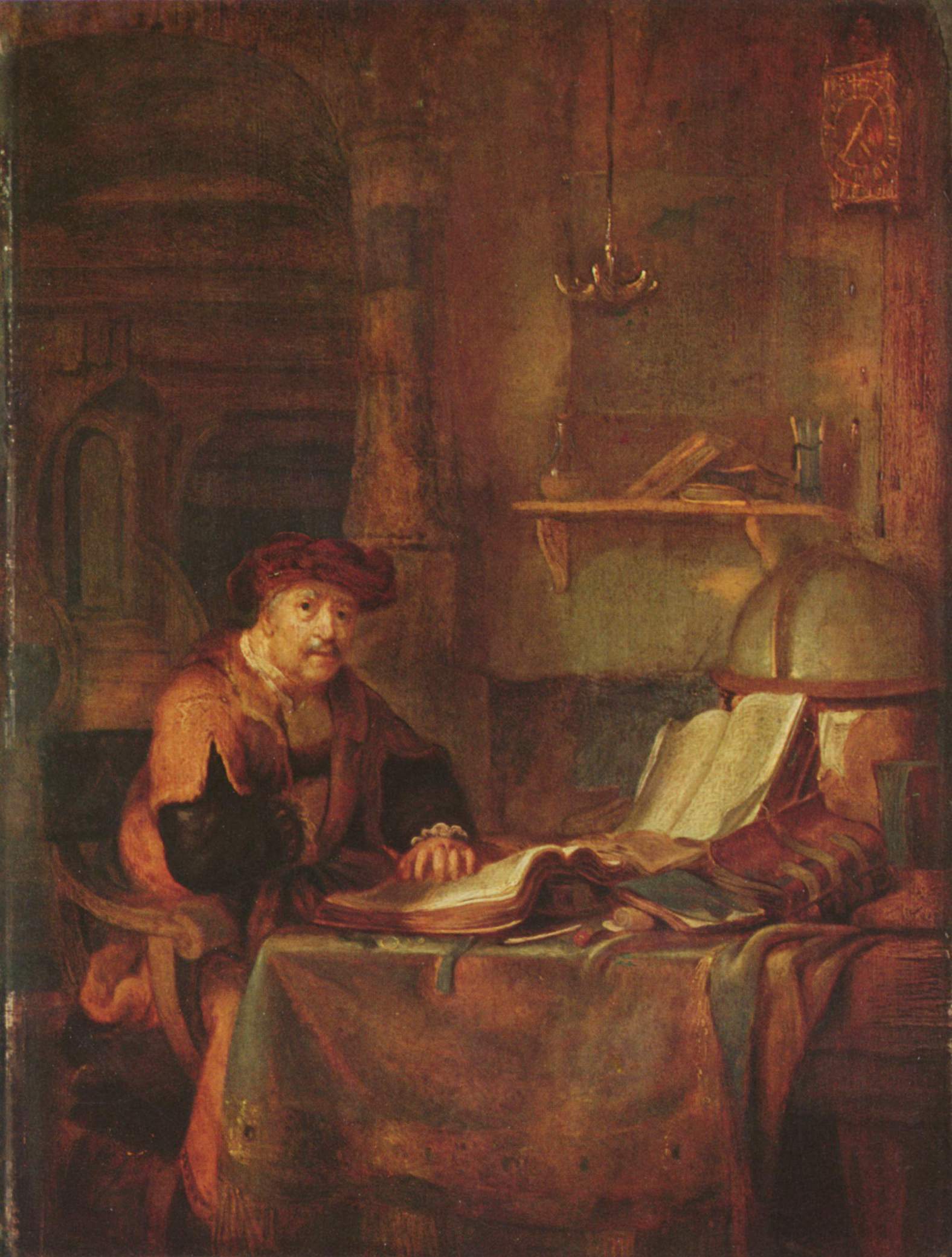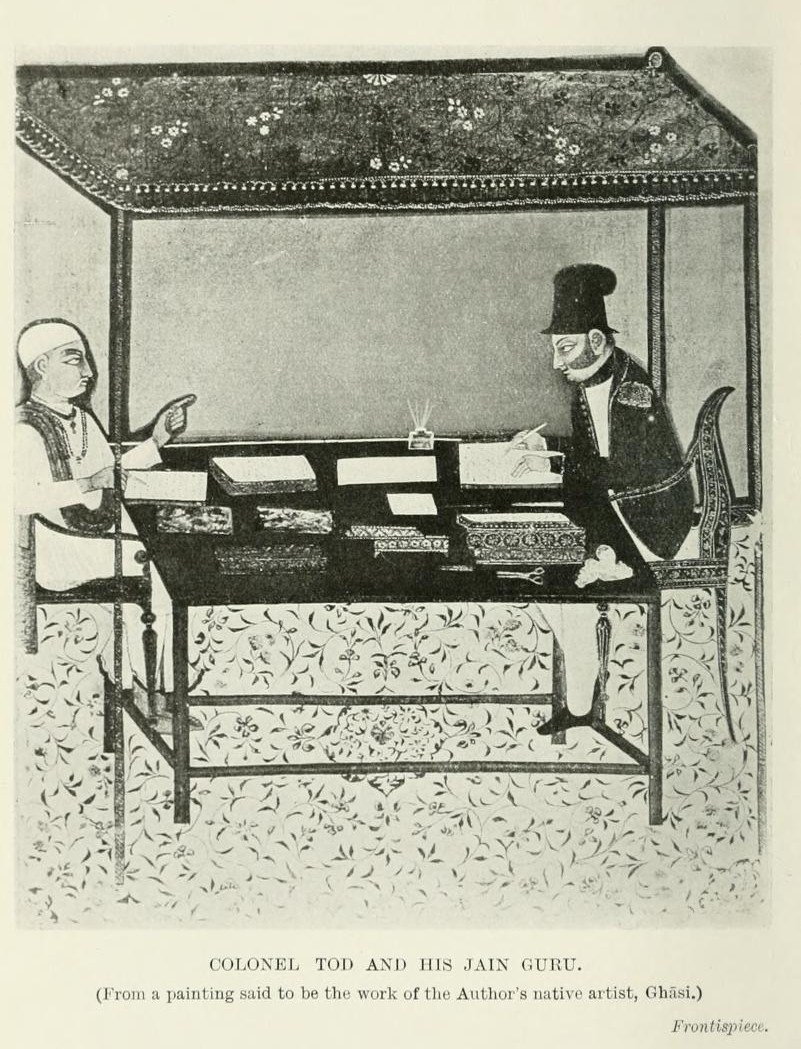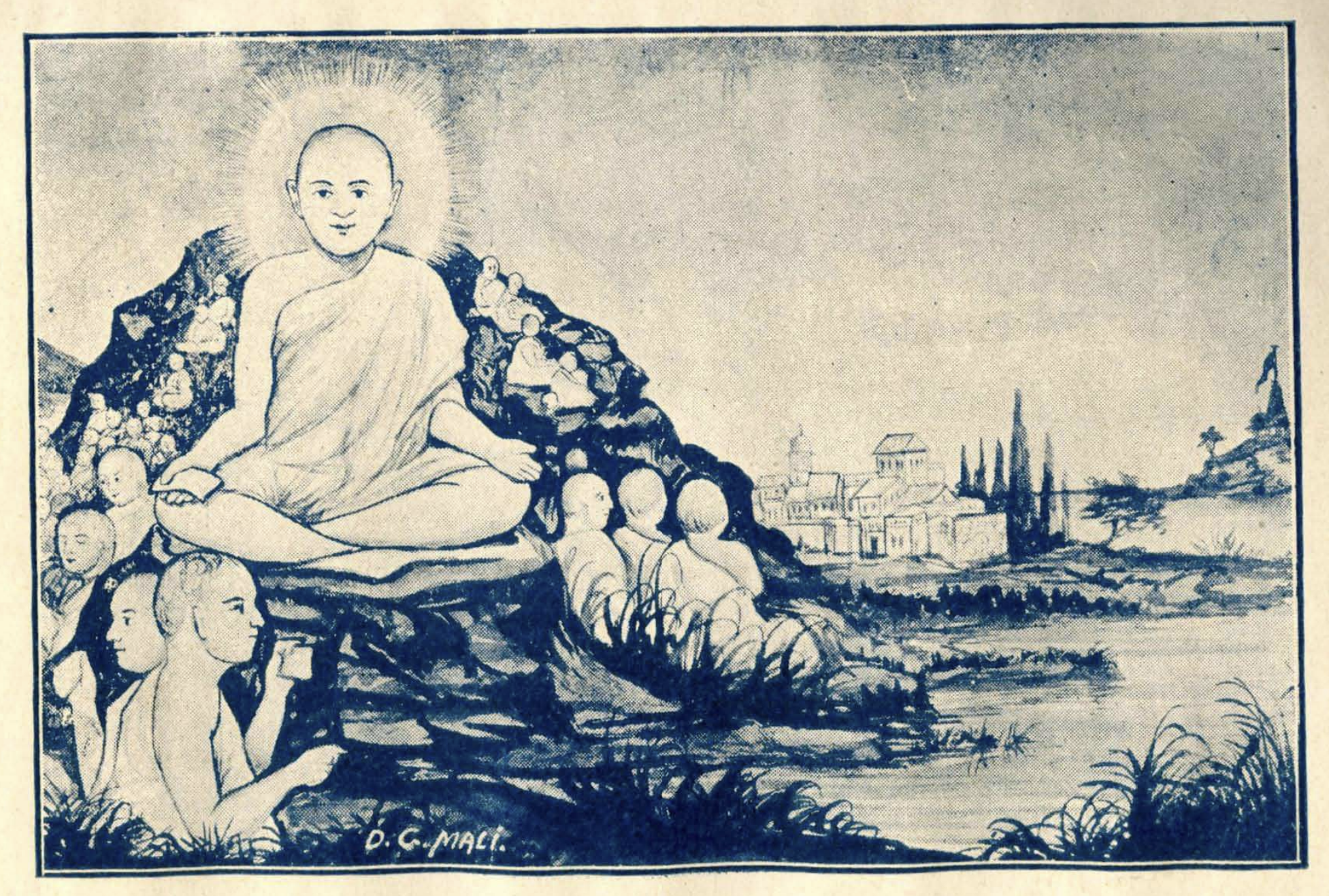|
Muhnot Nainsi
Muhnot Nainsi (1610–1670) was a medieval historian and Dewan of Rathore ruler Jaswant Singh of Marwar. He is known for his studies of the region now encompassed by the state of Rajasthan in India. He was son of Jaimal Muhnot, who was Senior Office holder under reign of Sur Singh and Gaj Singh Early in his professional career, Nainsi was appointed successively as the hakim (administrative head) of various parganas in Marwar. The extensive, first-hand knowledge he collected of the region informed his later writings. In 1658, he was appointed dewan of Marwar, in which position he served until 1666. The literary works he is most known for are ''Marwar Ra Pargana Ri Vigat'' and ''Nainsi Ri Khyat.'' Early life Mumhata Nainsi Jaimilota was born 1611 in the Oswal The Oswal (sometimes spelled Oshwal or Osval) are a Śvētāmbara, Śvetāmbara Jain merchant community with origins in Osian, Jodhpur, Osian, a town in the Marwar region of Rajasthan, India. According to research by J ... [...More Info...] [...Related Items...] OR: [Wikipedia] [Google] [Baidu] |
Rajasthani Language
The Rajasthani languages are a group of Western Indo-Aryan languages, primarily spoken in Rajasthan and Malwa, and adjacent areas of Haryana, Gujarat and Madhya Pradesh in India and South Punjab and the adjacent areas of Sindh in Pakistan. They have also reached different corners of India, especially eastern and southern parts of India, due to the migrations of people of the Marwari community who use them for internal communication. Rajasthani languages are also spoken to a lesser extent in Nepal, where they are spoken by 25,394 people according to the 2011 Census of Nepal. The term Rajasthani is also used to refer to a literary language mostly based on Marwari.. Geographical distribution Most of the Rajasthani languages are chiefly spoken in the state of Rajasthan but are also spoken in Gujarat, Western Madhya Pradesh i.e. Malwa and Nimar, Haryana and Punjab. Rajasthani languages are also spoken in the Bahawalpur and Multan sectors of the Pakistani provinces of Punjab an ... [...More Info...] [...Related Items...] OR: [Wikipedia] [Google] [Baidu] |
Khyat
Khyat (IAST: Khyāta) is a form of bardic historical prose that was prevalent in the western Indian states of Rajasthan and Gujarat. It is a collection of events or continuous history. Khyats generally contained histories of a ruling dynasty or a person. In the former states that now constitute Rajasthan, Khyatas were written by the Charans under the patronage of rulers who wished to perpetuate their exploits. These accounts contained histories of battles, sacrifices, valour, and chivalry, values that came to be associated with Rajputs. Khyatas are often known by the name of their authors; e.g., ''Bankidās-ri-Khyāt'' (Khyat by Kaviraja Bankidas). Nainsi-ri-Khyat written by Nainsi is considered to be the most prominent of khyats. Types of khyats Khyatas can be categorised into 2 types: # Khyatas which contains a contiguous or continuous history, such as the ''Dayāldās ri Khyāt''. # Khyatas which contains a collection of different 'vatas', like the ''Nainsi ri Khyat''. K ... [...More Info...] [...Related Items...] OR: [Wikipedia] [Google] [Baidu] |
1670 Deaths
Events January–March * January 17 – Raphael Levy, a Jewish resident of the city of Metz in France, is burned at the stake after being accused of the September 25 abduction and ritual murder of a child who had disappeared from the village of Glatigny. The prosecutor applies to King Louis XIV for an order expelling all 95 Jewish families from Metz, but the king refuses. * January 27 – The Muslim emperor Aurangzeb of the Mughal Empire in India issues an order for the destruction of all Hindu temples and schools in the empire, including the Keshvadeva Temple in Mathura. * February 4 – The Battle of Sinhagad takes place in India (in the modern-day Maharashtra state) as the Maratha Empire army, led by Tanaji Malusare, leads an assault on the Kondhana Fortress that had been captured by the Mughal Empire. Tanaji, called "The Lion" by his followers, captures the fortress by guiding the successful scaling of the walls of the fortress with ladders cre ... [...More Info...] [...Related Items...] OR: [Wikipedia] [Google] [Baidu] |
1610 Births
Some have suggested that 1610 may mark the beginning of the Anthropocene, or the 'Age of Man', marking a fundamental change in the relationship between humans and the Earth system, but earlier starting dates (ca. 1000 C.E.) have received broader consensus, based on high resolution pollution records that show the massive impact of human activity on the atmosphere. Events January–March * January 6 – ''Nossa Senhora da Graça'' incident: A Portuguese carrack sinks near Nagasaki, after fighting Japanese samurai for four nights. * January 7 – Galileo Galilei first observes the four Galilean moons of Jupiter: Ganymede, Callisto, Europa and Io, but is unable to distinguish the latter two until the following day. * February 24 – English courtier Thomas Roe sets out on an expedition to The Guianas and Amazon River. * March 13 – Galileo Galilei's treatise on astronomy, ''Sidereus Nuncius'', the first printed scientific record of observations thro ... [...More Info...] [...Related Items...] OR: [Wikipedia] [Google] [Baidu] |
17th-century Indian Historians
The 17th century lasted from January 1, 1601 (represented by the Roman numerals MDCI), to December 31, 1700 (MDCC). It falls into the early modern period of Europe and in that continent (whose impact on the world was increasing) was characterized by the Baroque cultural movement, the latter part of the Spanish Golden Age, the Dutch Golden Age, the French ''Grand Siècle'' dominated by Louis XIV, the Scientific Revolution, the world's first public company and megacorporation known as the Dutch East India Company, and according to some historians, the General Crisis. From the mid-17th century, European politics were increasingly dominated by the Kingdom of France of Louis XIV, where royal power was solidified domestically in the civil war of the Fronde. The semi-feudal territorial French nobility was weakened and subjugated to the power of an absolute monarchy through the reinvention of the Palace of Versailles from a hunting lodge to a gilded prison, in which a greatly expanded ro ... [...More Info...] [...Related Items...] OR: [Wikipedia] [Google] [Baidu] |
Scholars From Rajasthan
A scholar is a person who is a researcher or has expertise in an academic discipline. A scholar can also be an academic, who works as a professor, teacher, or researcher at a university. An academic usually holds an advanced degree or a terminal degree, such as a master's degree or a doctorate (PhD). Independent scholars and public intellectuals work outside the academy yet may publish in academic journals and participate in scholarly public discussion. Definitions In contemporary English usage, the term ''scholar'' sometimes is equivalent to the term ''academic'', and describes a university-educated individual who has achieved intellectual mastery of an academic discipline, as instructor and as researcher. Moreover, before the establishment of universities, the term ''scholar'' identified and described an intellectual person whose primary occupation was professional research. In 1847, minister Emanuel Vogel Gerhart spoke of the role of the scholar in society: Gerhart argued ... [...More Info...] [...Related Items...] OR: [Wikipedia] [Google] [Baidu] |
James Tod
Lieutenant-Colonel James Tod (20 March 1782 – 18 November 1835) was an officer of the British East India Company and an Orientalism, Oriental scholar. He combined his official role and his amateur interests to create a series of works about the history and geography of India, and in particular the area then known as Rajputana that corresponds to the present day state of Rajasthan, and which Tod referred to as ''Rajast'han''. Tod was born in London and educated in Scotland. He joined the East India Company as a military officer and travelled to India in 1799 as a cadet in the Bengal Army. He rose quickly in rank, eventually becoming captain of an escort for an Envoy (title), envoy in a Scindia, Sindian royal court. After the Third Anglo-Maratha War, during which Tod was involved in the intelligence department, he was appointed Political Resident, Political Agent for some areas of Rajputana. His task was to help unify the region under the control of the East India Company ... [...More Info...] [...Related Items...] OR: [Wikipedia] [Google] [Baidu] |
Gaurishankar Ojha
Gaurishankar Hirachand Ojha (15 September, 1863– 17 April, 1947), born in Rohida village of Sirohi District, was a historian from the Indian state of Rajasthan. A prolific author, he wrote several books ( in Hindi ) on the history of Rajasthan and other historical subjects. Subsequent historians from Rajasthan have referred to him as ''Guruvara Mahamahopadhyaya'' (e.g. Dasharatha Sharma in ''Early Chauhan Dynasties''). Ojha regarded ''Kaviraj'' Shyamaldas as his ''guru'' and worked under him as assistant secretary of the historical department, Udaipur Early life and education Dr. Ojha was born in a Audichya Brahmins family, his father's name was Hirachand Ojha. His primary education was completed at his home and then he moved to Bombay for further education, where he learnt about Scripts, Archaeology and History. Thereafter, he came to Udaipur, where Maharana Fateh Singh appointed him as Head of State Archaeological Department. In 1908, Dr. Ojha was appointed as Head of R ... [...More Info...] [...Related Items...] OR: [Wikipedia] [Google] [Baidu] |
Jainism
Jainism ( ), also known as Jain Dharma, is an Indian religions, Indian religion whose three main pillars are nonviolence (), asceticism (), and a rejection of all simplistic and one-sided views of truth and reality (). Jainism traces its spiritual ideas and history through the succession of twenty-four , supreme preachers of ''dharma''. The first in the current time cycle is Rishabhadeva, who tradition holds lived millions of years ago; the 23rd is Parshvanatha, traditionally dated to the 9th century Common Era, BCE; and the 24th is Mahāvīra, Mahavira, who lived . Jainism is considered an eternal ''dharma'' with the guiding every time cycle of the Jain cosmology, cosmology. Central to understanding Jain philosophy is the concept of ''bhedavijñāna'', or the clear distinction in the nature of the soul and non-soul entities. This principle underscores the innate purity and potential for liberation within every Jīva (Jainism), soul, distinct from the physical and menta ... [...More Info...] [...Related Items...] OR: [Wikipedia] [Google] [Baidu] |
Oswal
The Oswal (sometimes spelled Oshwal or Osval) are a Śvētāmbara, Śvetāmbara Jain merchant community with origins in Osian, Jodhpur, Osian, a town in the Marwar region of Rajasthan, India. According to research by James Tod, Colonel James Tod, Osavālas are purely of Rajput origins and they belong to not one, but several different Rajput tribes. The Osavālas origin legend has multiple aspects, all of which include a fierce, meat-eating goddess who becomes pacified by a Jain ascetic, involving the conversion of a king to Jainism. In modern times, there are barely any Osavālas living in Osiyān, but they still regard the Mahavira Jain temple, Osian, Mahavira temple and Sachiya Mata Temple as their "mother temples". They reside in Rajasthan, Malwa, Gujarat, and Kutch district, Kutch. They were formerly also found in the Tharparkar district of Sindh (Partition of India, pre-partition). Creation of the ''Oswāl clan'' Ratnaprabhasuri's penance near Upkeśapattan According to ... [...More Info...] [...Related Items...] OR: [Wikipedia] [Google] [Baidu] |
Dewan
''Dewan'' (also known as ''diwan'', sometimes spelled ''devan'' or ''divan'') designated a powerful government official, minister, or ruler. A ''dewan'' was the head of a state institution of the same name (see Divan). Diwans belonged to the elite families in the history of Mughal and post-Mughal India and held high posts within the government. Etymology The word is Persian in origin and was loaned into Arabic. The original meaning was "bundle (of written sheets)", hence "book", especially "book of accounts," and hence "office of accounts," "custom house," "council chamber". The meaning of the word, ''Divan (furniture), divan'' "long, cushioned seat" is due to such seats having been found along the walls in Middle Eastern council chambers. It is a common surname among Sikhs in Punjab. Council The word first appears under the Caliphate of Omar, Omar I (A.D. 634–644). As the Caliphate state became more complicated, the term was extended over all the government bureaus. The ... [...More Info...] [...Related Items...] OR: [Wikipedia] [Google] [Baidu] |
Jodhpur State
Kingdom of Marwar, also known as Jodhpur State during the modern era, was a kingdom in the Marwar region from 1243 to 1818 and a princely state under British rule from 1818 to 1947. It was established in Pali by ''Rao Siha'', possibly a migrant Gahadavala dynasty, Gahadavala noble, in 1243. His successors continued to struggle against regional powers for domination and 9 out of 15 rulers till 1438 died in combat. In 1395, its capital was changed to Mandore by Rao Chunda of Mandore and to Jodhpur in 1459 by Jodha of Mandore, Rao Jodha. Marwar struggled and resisted against the Mughal Empire, Mughals under the rule of Rao Ganga and Maldeo Rathore who is known to be one of the greatest warriors of the time. The kingdom remained independent until it was annexed by the Mughal Empire in 1581 after the death of Chandrasen Rathore. It remained under direct Mughal control until Udai Singh of Marwar, Udai Singh was restored to the throne as a vassal and given the title of Raja in 1583. D ... [...More Info...] [...Related Items...] OR: [Wikipedia] [Google] [Baidu] |







